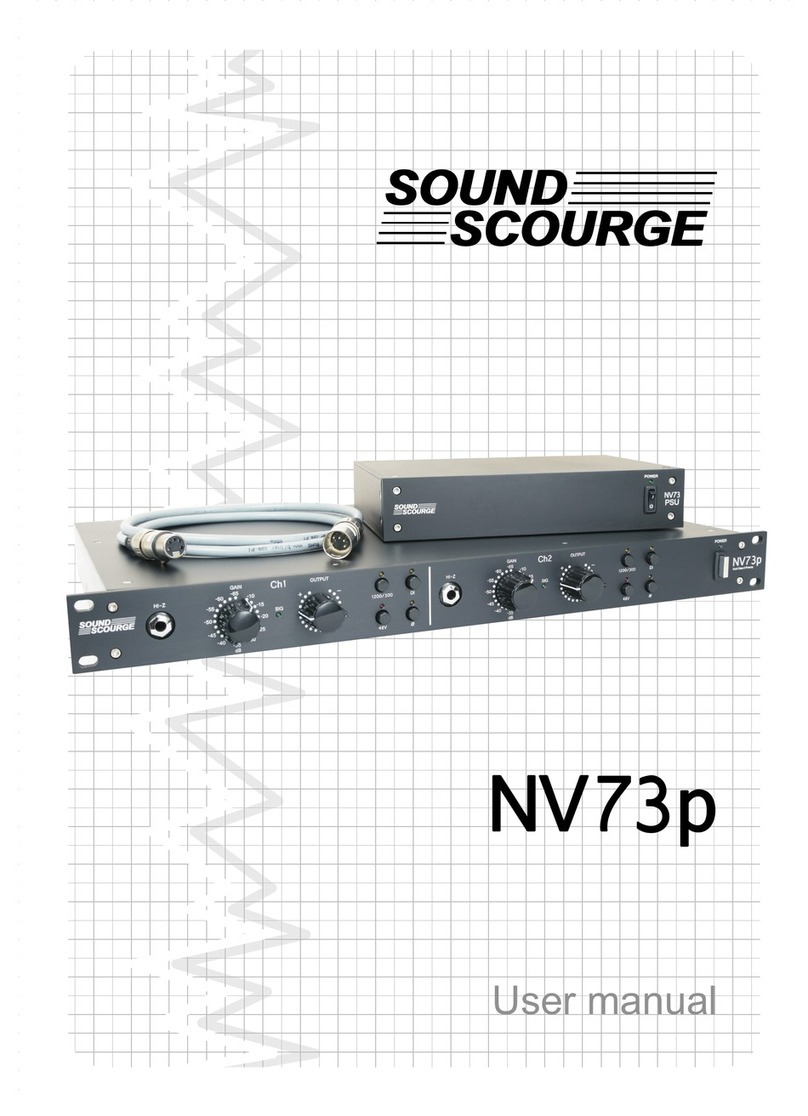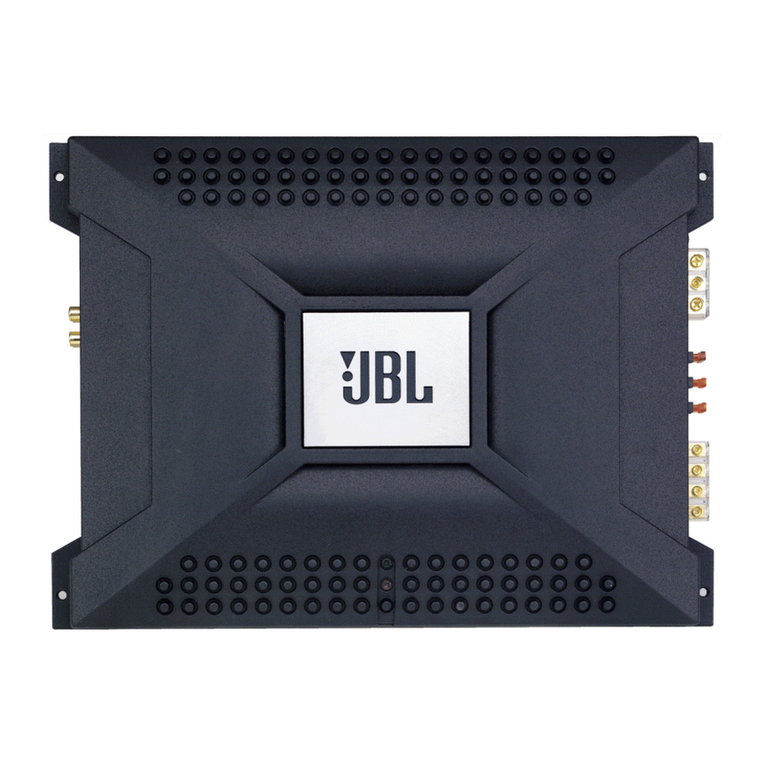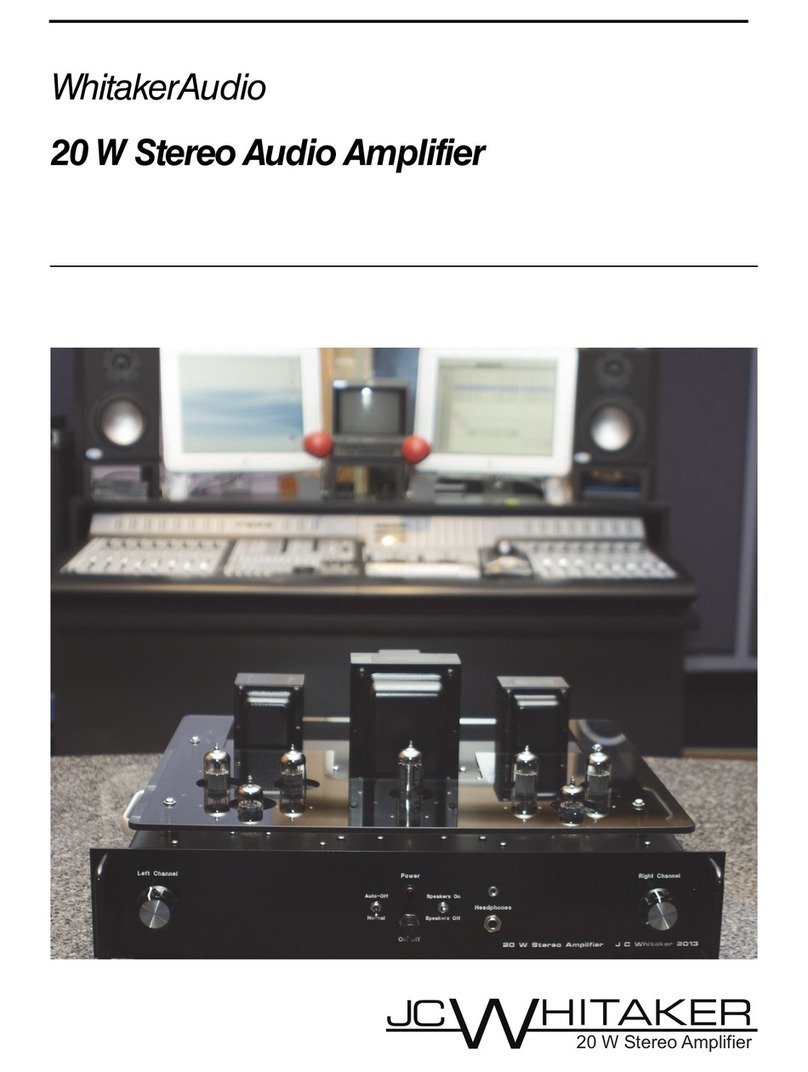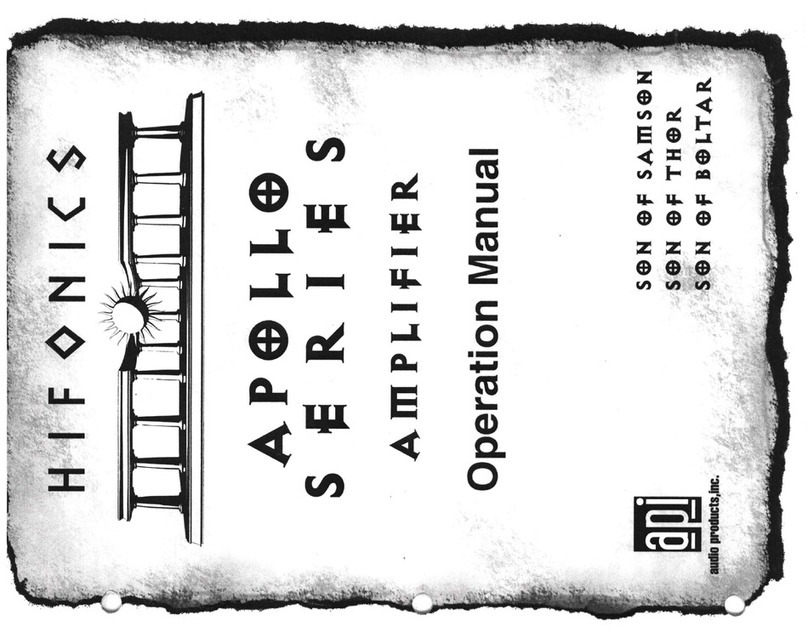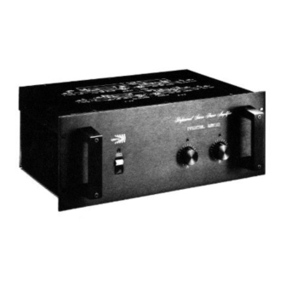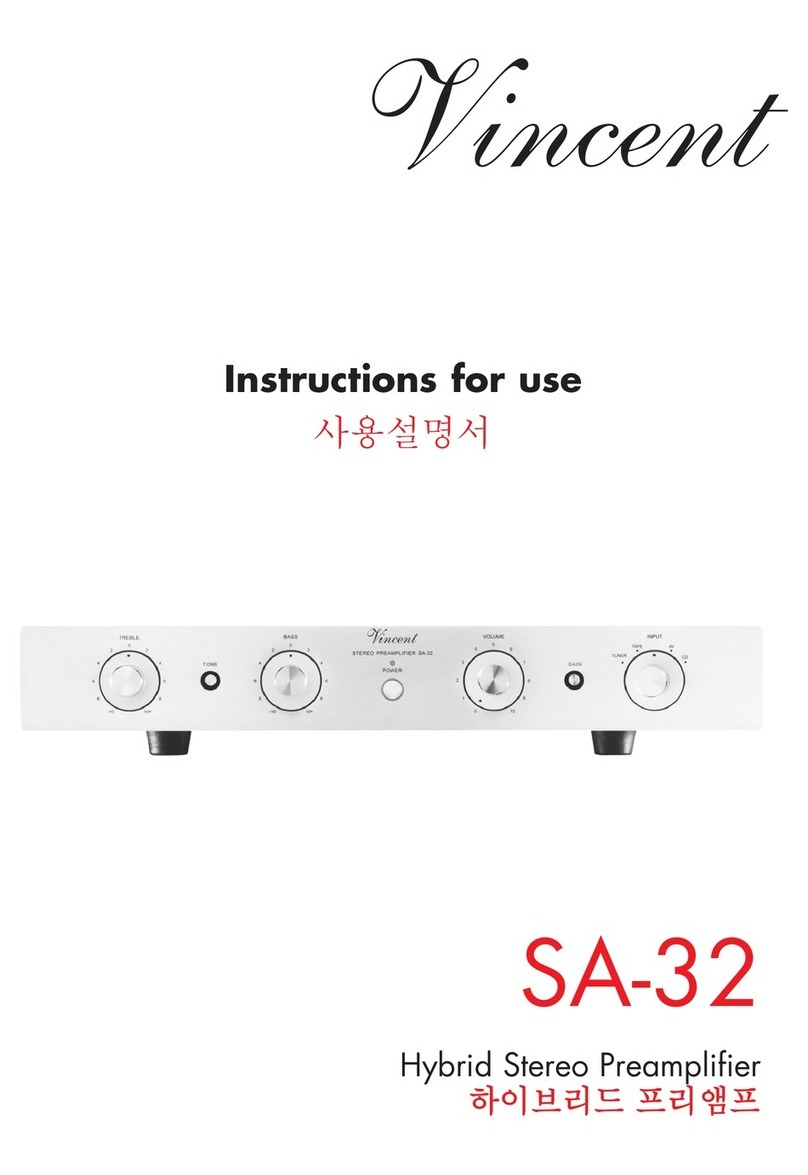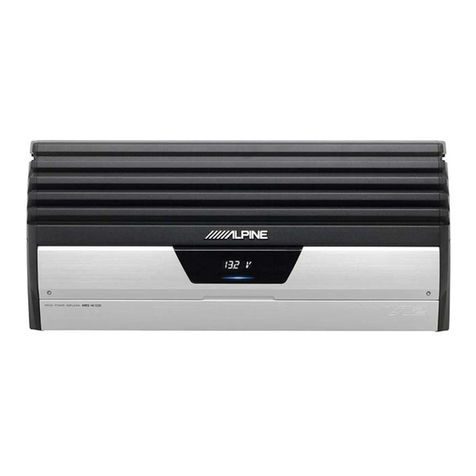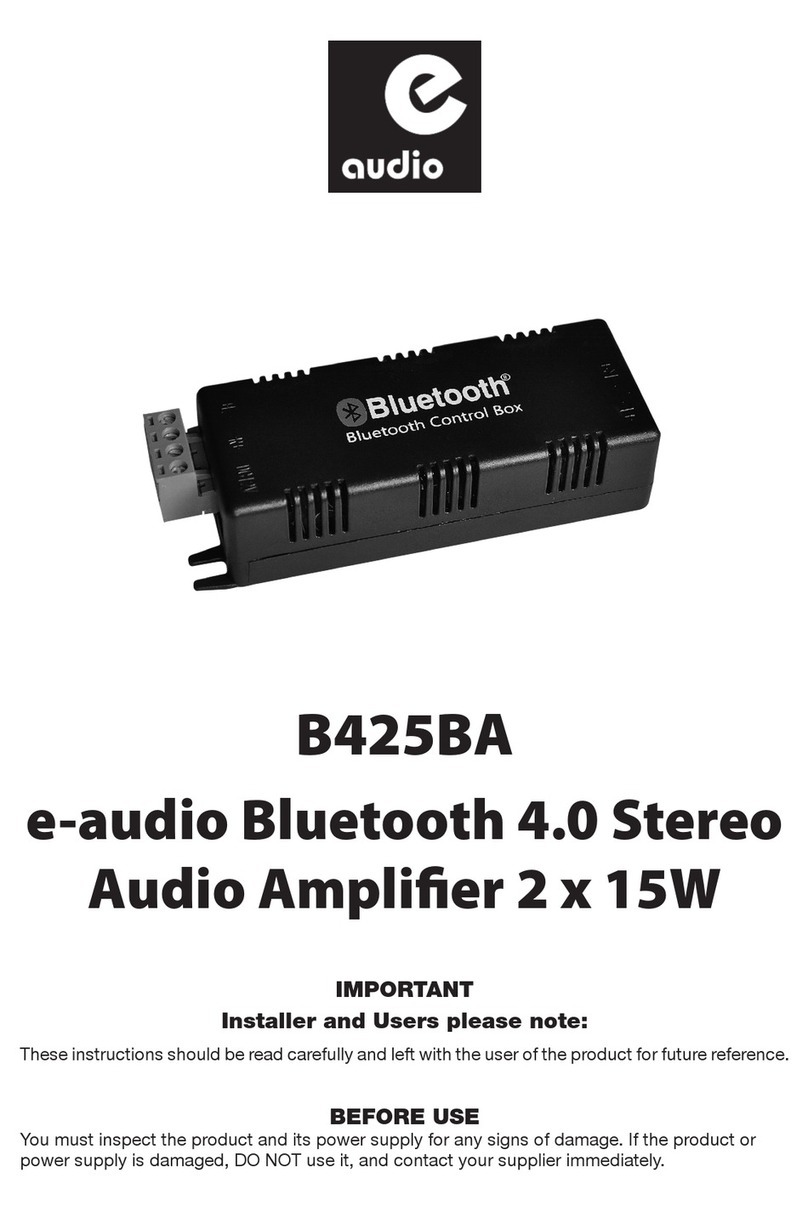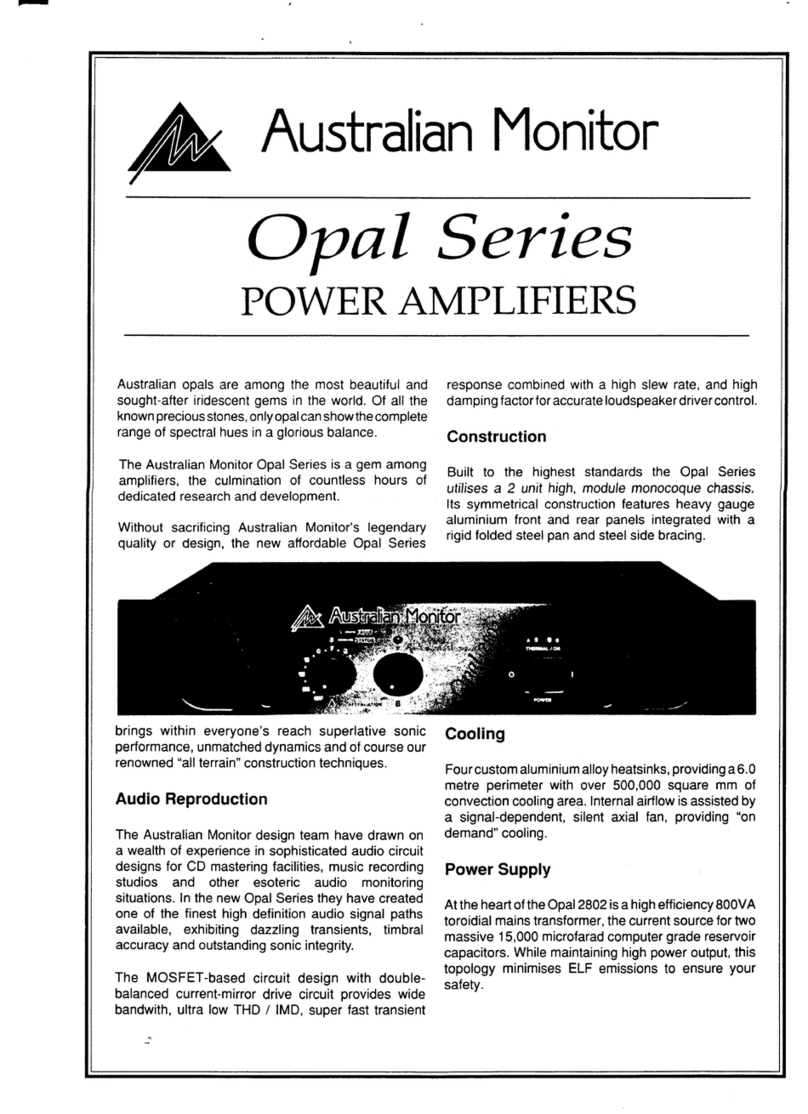Sound Scourge NV73pq User manual

User Manual

2
IMPORTANT SAFETY INSTRUCTIONS
CAUTION: TO REDUCE THE RISK OF ELECTRIC SHOCK,
DO NOT REMOVE COVER. NO USER-SERVICABLE PARTS
INSIDE. REFER SERVICING TO QUALIFIED SERVICE
PERSONNEL.
The lightning flash with arrowhead symbol, within an equilateral triangle, is intended to
alert the user to the presence of uninsulated dangerous voltage within the product’s
enclosure that may be of sufficient magnitude to constitute a risk of electric shock.
WARNING:TO PREVENT FIRE OR SHOCK HAZARD, DO
NOT EXPOSE THIS EQUIPMENT TO RAIN OR MOISTURE
The exclamation point within an equilateral triangle is intended to alert the user to the
presence of important operating and maintenance (servicing) instructions in the manual
accompanying the appliance.
The equipment should be connected to a grounded AC outlet.
Never expose the equipment to rain or humidity.
Follow the instructions in the user manual.
Never attempt to repair the equipment on your own.
Rev. C

INTRODUCTION
3
Thank you for purchasing Sound Scourge equipment. The equipment you now own is result of
many hours of research and development as well as multiple recording and playback tests.
The NV73pq preamplifier is a transistor device with a signal path based solely on discrete elements.
The preamplifier has a transformer balanced microphone input with a high impedance instrumental
input. The preamplifier’s signal output is transformer balanced as well. All the preamp blocks work
in class A.
The equalizer, based on inductive elements, is an integral part of the device. The frequencies of its
filters have been carefully selected to enable creative use of the preamplifier during recording as
well as subsequent recording of audio material.
We have taken a rigorous approach to both components and sound of the preamplifier. The device
is manually assembled from selected parts characterized by a narrow parameter tolerance.
The signal path has been reduced to its minimal length and the signal is guided through top class
rotary switches. Switching impedance, signall phase, etc. is accomplished by hermetically sealed
signal relays.
The screened-off power supply has an ample power reserve, which results in stable operation of
the device. NV73pq casing is made of anodized aluminium and all elements are machined with
high accuracy.
Rev. C

FRONT PANNEL DESCRIPTION
4
1. GAIN. It regulates the sensivity of the microphone input, line input, and an instrumental HI-Z input.
Gain sensivity is adjustable in 5 decibel increments ranging from -20 to -80 dB for microphone input,
+10 to -20 dB for the line input and -5 to -55 dB for HI-Z input. This controller also plays the role of
a switch activating a given input. The line input is activated by turning the controller counterclockwise
from the lower OFF position. Similary, the microphone input is activated by turning the controller
clockwise from the lower OFF position. The HI-Z input is activated by plugging in a guitar cable into
the HI-Z socket and setting the GAIN switch in the microphone (MIC) position.
2. HI-Z instrument input is used to connect the instruments with high output impedance (guitar,
bass, etc.). It is also suitable for active pickups and electronic instruments like synthesizers or
samplers. The impedance of HI-Z input is 1Mohm.
The transistor impedance converter is based on a selected JFET transistor and the output this system
is directed to the microphone transformer, for revealing the full sound potential of devices working with
HI-Z input.
Rev. C
12

5
FRONT PANNEL DESCRIPTION
3456
3. Frequency boost or cut in treble equalizer section knob.The frequency is boosted or cut off at +/-16dB
4.Treble frequency knob. Marked on the knob are five frequencies to choose from: 16kHz, 12kHz, 10kHz,
6.8kHz and 4.7kHz. The treble section is a shelving equalizer.
5. Frequency boost or cut knob in the midrange section of the equalizer. The frequency is boosted or
cut off at +/- 18dB.
6. Midrange frequency knob. Marked on the knob are ten frequencies to choose from: 250Hz, 360Hz,
700Hz, 1.2kHz, 1.8kHz, 2.4kHz, 3.2kHz, 4.8kHz, 7.2kHz and 10kHz. Midrange section is a peak
equalizer.
Rev. C

6
FRONT PANNEL DESCRIPTION
789
7. Frequency boost or cut knob in the bass section of the equalizer. The frequency is boosted or cut off
at +/- 16dB.
8. Bass frequency knob. Marked on the knob are four frequencies to choose from: 35Hz, 60Hz, 110Hz,
and 220Hz. The bass section is a shelving equalizer.
9. High-pass filter cutoff frequency knob. Marked on the knob are four frequencies to choose from: 50Hz,
80Hz, 160Hz and 300Hz. Frequencies are cut off with an inclination of 18dB per octave.
Each frequency knob has an OFF position, which turns off the relevant section of the equalizer.
Rev. C

7
FRONT PANNEL DESCRIPTION
10. Output attenuator knob. Adjusts the attenuation of the signal after the input stage and equalizer.
The signal adjusted by the attenuator signal is fed directly to the output buffer.
11. Impedance selector switch. Switches the microphone input impedance from 1200 ohms to 300.
Switching to lower impedance is indicated by the yellow LED above the switch.
12. Equalizer block switch. Switching the equalizer on is indicated by the LED above. This switch
operates globally in the entire equalizer block regardless of the settings for each band in the equalizer.
It can be used to compare the sound before and after the equalization is introduced (bypass).
13. Power switch.
14. Phantom power switch +48V. Switching the phantom power on is indicated by the red LED.
15. Signal phase switch.
Rev. C
10 11 12 13
14 15

8
BACK PANNEL DESCRIPTION
WWW.SOUND SC OU RGE.COM
3
2
45
1. DC power socket.
2. Serial number.
3. Output socket.
4. Line input.
5. Microphone input.
Rev. C
1
A 6 wire DC power cord is supplied with the NV73pq preamplifier.

9
POWER SUPLY UNIT
Wersja-C
Power for the NV73pq preamplifier is provided by a dedicated external power supply unit PSU NV73.
The PSU has two output sockets and can power two preamps NV73pq or NV73p.
The PSU's design allows disconnecting signal ground from the ground to eliminate the ground loop
during studio setup.
PSU's chasis is made of the same materials as the NV73pq preamp and harmonizes with its design.
PSU NV73 is sold separately.

10
Wersja-C
BACK PANNEL DESCRIPTION
1
1. AC 230V power outlet.
2. DC power supply outlet for connecting powered device no 1 .
23
3. DC power supply outlet for connecting powered device no 2 .
4. Signal ground terminal (CIRCUIT)
4 5
5. Ground terminal (CHASSIS)
6
6. Link.
POWER SUPLY UNIT
Signal ground of the powered device is routed out the power supply through the black terminal
(4) labeled (CIRCUIT). The mass is connected by link (6) with the green terminal (CHASSIS) (5),
which is directly connected to ground. In case of ground loops or hum, the signal ground of the
unit can be disconected by removing the link (6) connecting the two terminal.

11
USAGE
The NV73pq preamplifier is suitable for any recording circumstances. It is great for recording acoustic
and electric guitars, drum kit and all kinds of vocals. The HI-Z input can be used to record bass guitars
and various electronic instruments. In such cases, the bulit-in equalizer proves very useful for creating
the sound of the instrument. The higly driven preamp will be very helpful for recording instruments of
lower quality, by adding harmonics to their sound. The NV73pq is not inclined to going to overdrive
owing to a very large dynamics reserve, allowing you to freely work on the sound.
The amplification of the microphone input is adjustable in the range of the -20 to -80 dB.
Such substantial gain is useful when working with classic ribbon microphones and recording sound
effects for advertising or films. All the whispers, murmurs, and other quiet sounds can be recorded
without unnecessary noise and tedious editing.
Another way of using NV73pq is the possibility of re-recording the already recorded tracks, for example,
when preparing to mix a foreign recording session. The line input best suits this purpose, allowing us
to adjust the line input sensivity ranging from +10 to -20 dB, using the equalizer if necessary.
We can achieve a psychoacoustic effect of sound concentration by skillfully setting the input stage.
This effect occurs with varying intensity depending on the drive level of processed tracks, that is why
the input level should be adjusted to suit your personal taste.
Stereo mixes can be processed using line inputs of two NV73pq devices. Just as the processing of
individual tracks, the stereo processing can revive a sluggish mix, thicken the sound , and if necessary
utilize the equalizer. This effect is very desirable if we want to slightly take the edge off the signal
amplitude peaks.
Attention! It is recommended to start the NV73pq preamp about 30 minutes prior to recording in
order to stabilize its operating parameters.
Rev. C

12
SPECIFICATION
Microphone input gain: -20 to -80 dB in 5 dB increments.
Line input gain: +10 to -20 dB in 5 dB increments.
HI-Z input gain: -5 to -55 dB in 5 dB increments.
Microphone input impedance: 1200/300 ohm switchable from the front panel.
Line input impedance: 10 kohm.
HI-Z input impedance: 1 Mohm
Output impedance: 75 ohm at 1 kHz.
Frequency response: 20 Hz - 20 kHz +/- 0,5 dB. 20 Hz - 60 kHz +/- 3 dB.
Distortion: 0,07% at 1 kHz.
Maximum output level: +26 dBu at 600 ohm load.
Rev. C
Weight: 4,5 kg.

13
BLOCK DIAGRAM
Rev. C

14
WARRANTY
Sound Scourge grants a 24 month warranty for the purchased equipment, guaranteeing that it is void
of any defects in material and workmanship. The equipment has been tested before shipping.
Rev. C

Table of contents
Other Sound Scourge Amplifier manuals
Popular Amplifier manuals by other brands

Yamaha
Yamaha P-2200/2201 product manual

Cycle Sounds
Cycle Sounds Rock Box installation instructions
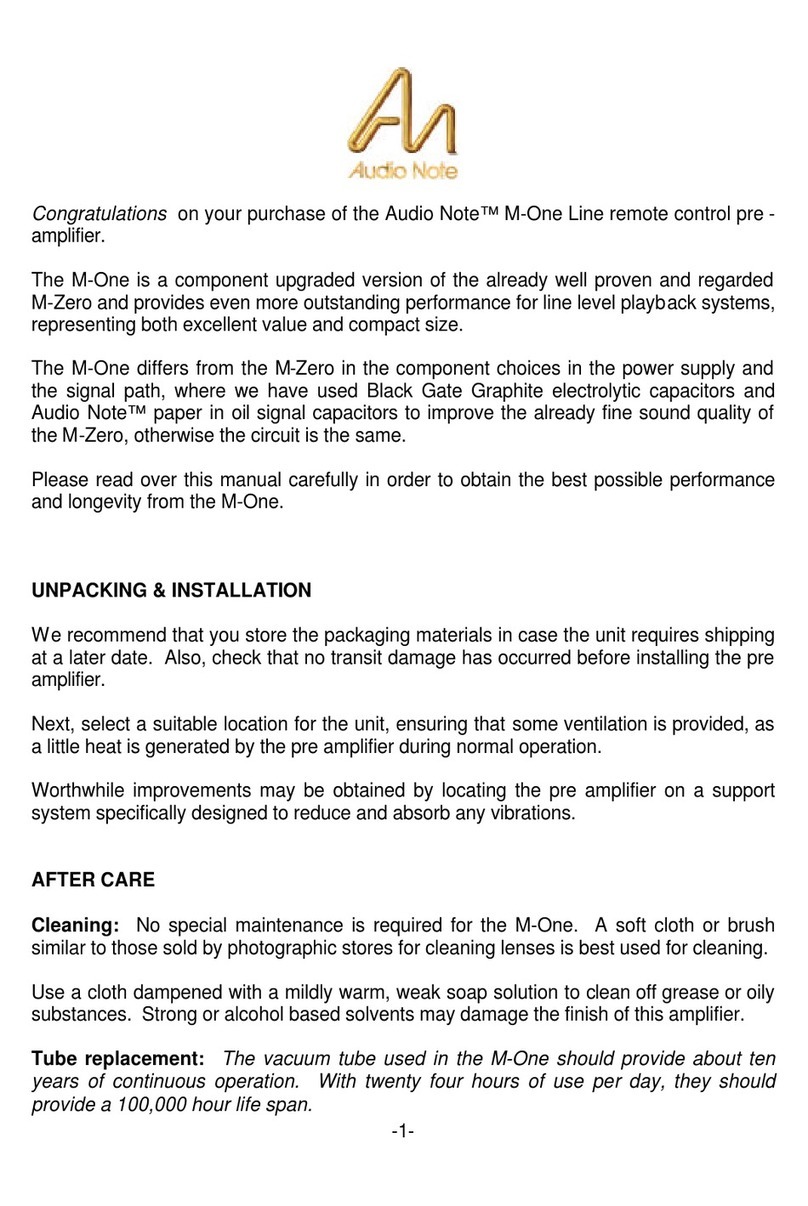
Audio Note
Audio Note M One manual
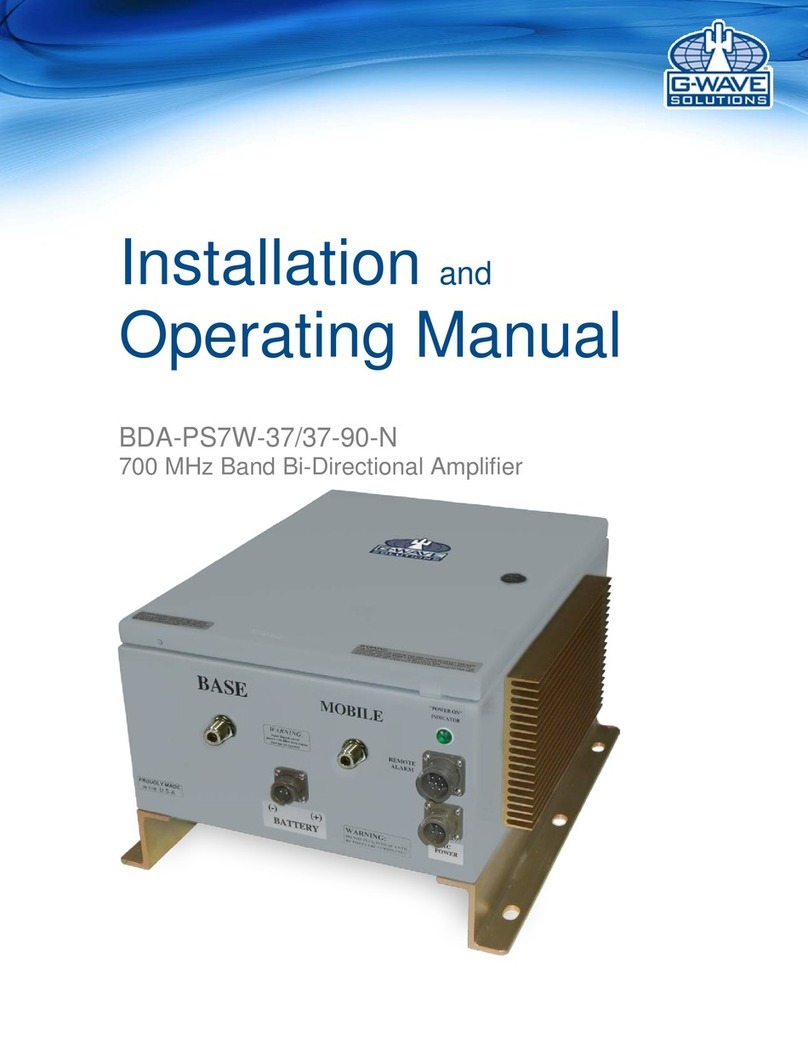
G-WAVE Solutions
G-WAVE Solutions BDA-PS7W-37 Installation and operating manual
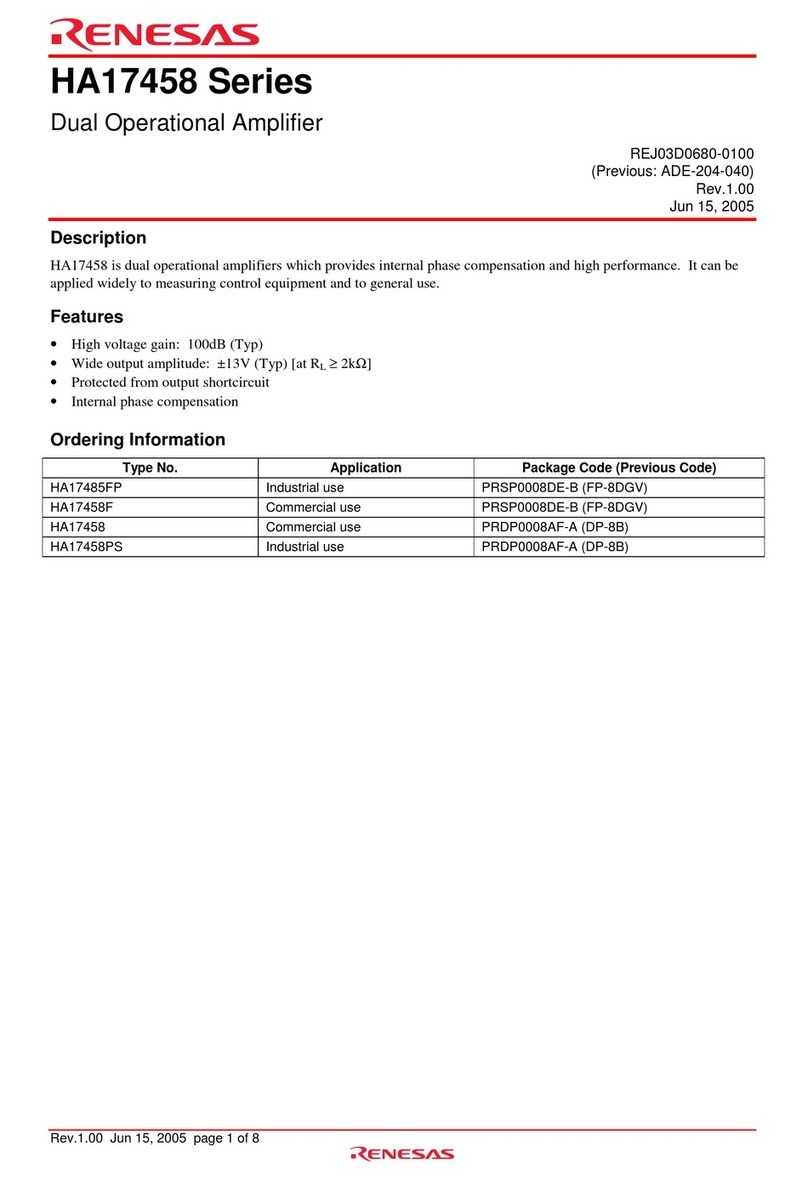
Renesas
Renesas HA17458 Series Specifications
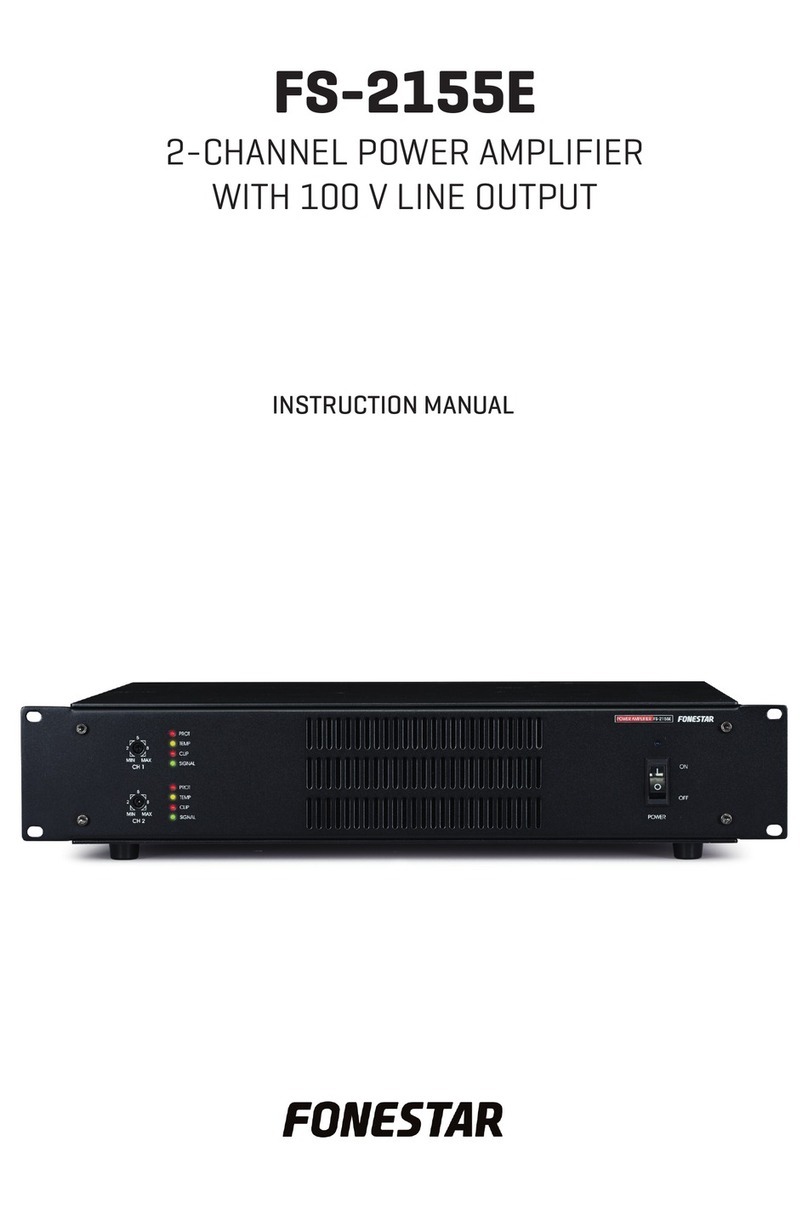
FONESTAR
FONESTAR FS-2155E instruction manual

